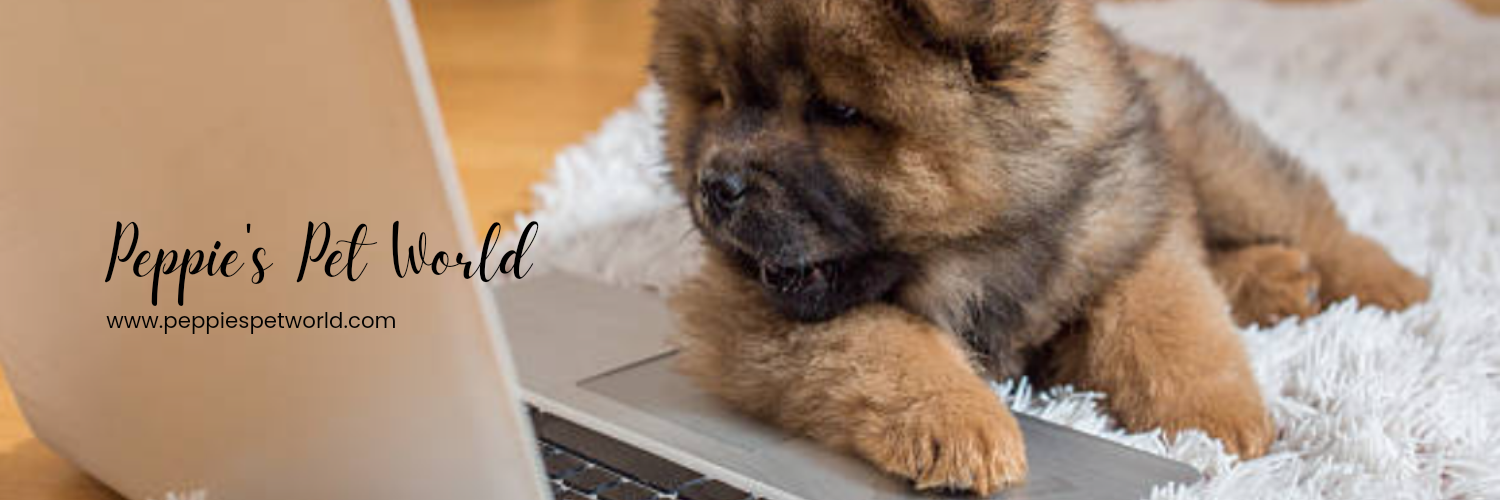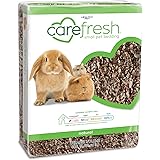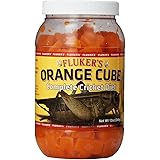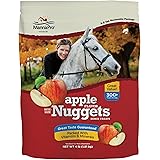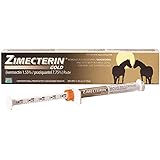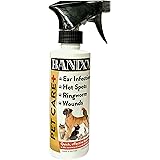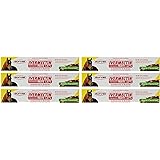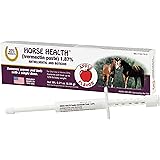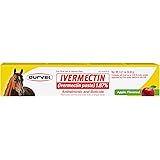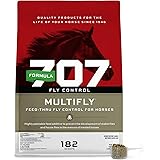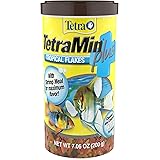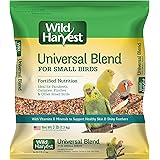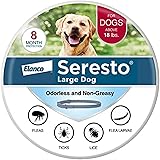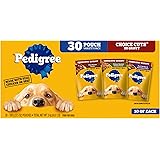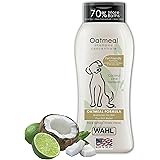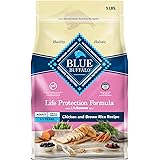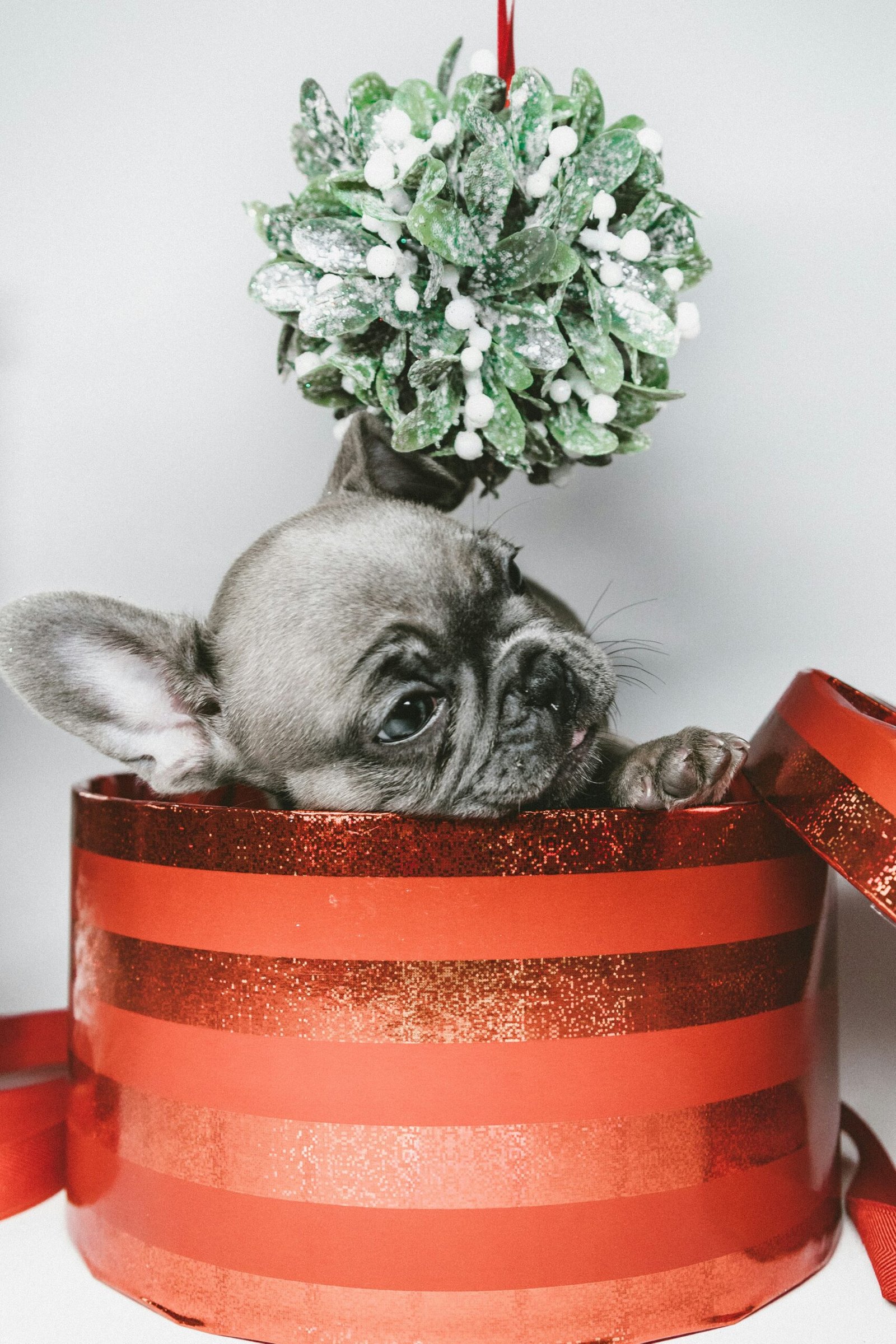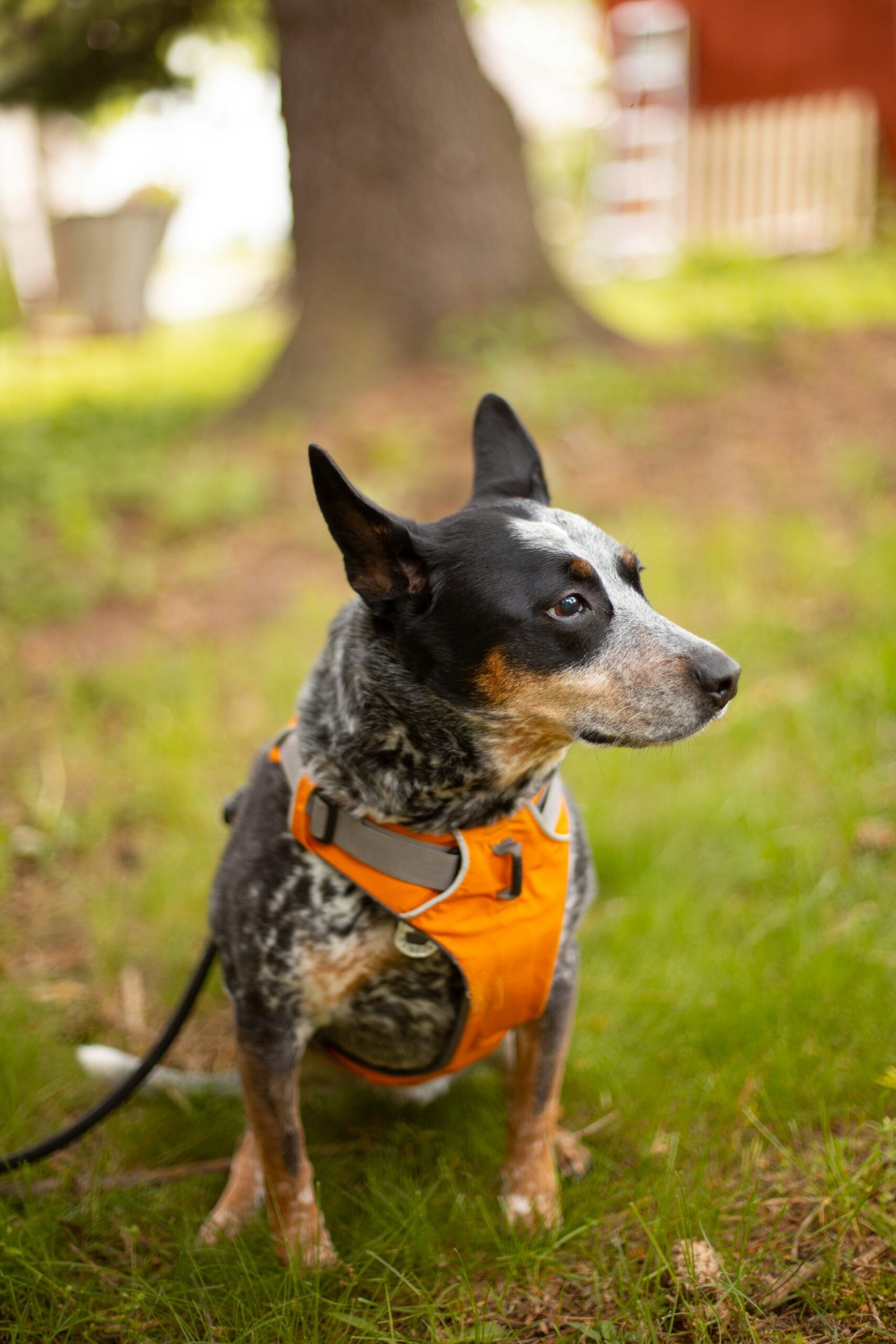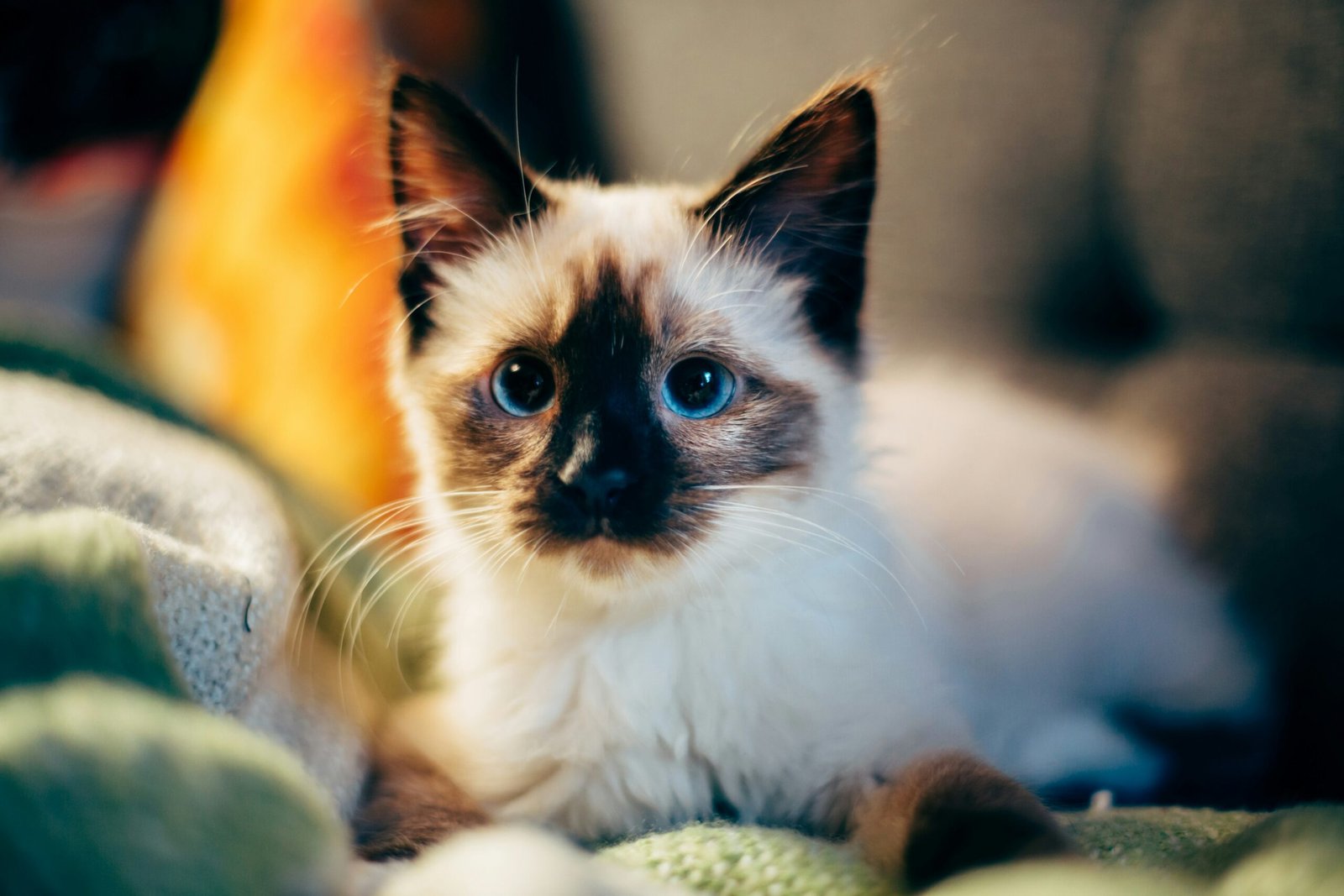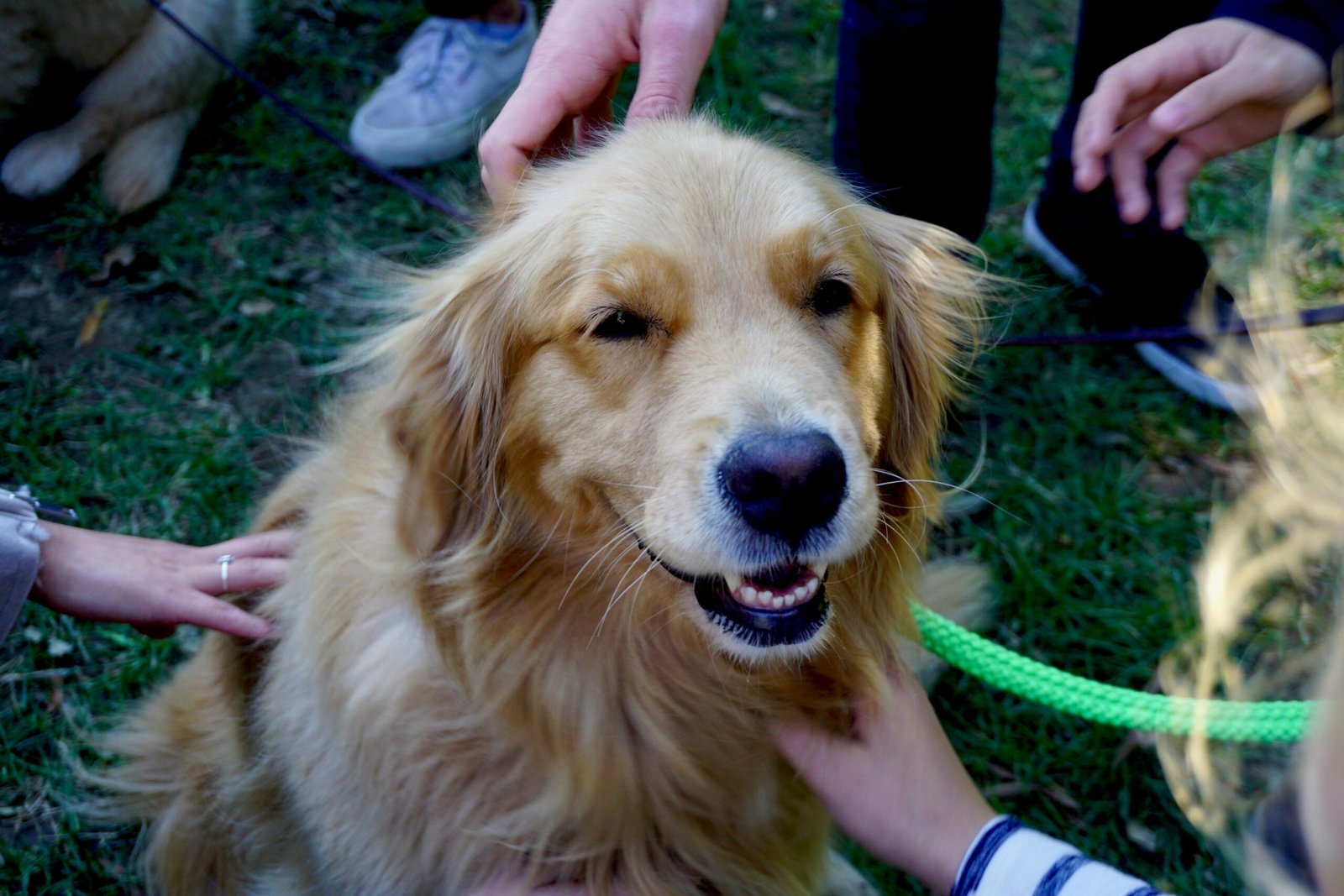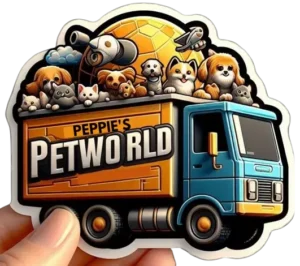Understanding Your Pet Pig
When considering a pet pig, it is essential to familiarize yourself with the various breeds and their specific characteristics. Pigs are diverse creatures, and their breeds can significantly influence size, temperament, and health. The most common pet pig breeds include the Vietnamese Potbellied pig, the Juliana pig, and the Kunekune pig. Each breed comes with its unique traits and upbringing needs, making breed knowledge imperative for proper care.
The Vietnamese Potbellied pig is perhaps the most widely recognized breed among pet pigs. Typically, these pigs can weigh between 100 to 200 pounds, reaching a maximum height of about 16 to 24 inches at the shoulder. They are known for their social and friendly disposition, making them great companions. However, potential owners should be aware that these pigs can often develop behavioral issues if not adequately trained or engaged.
Juliana pigs, on the other hand, are smaller in stature, averaging around 40 to 60 pounds at maturity. These pigs are known for their energetic and curious nature, which requires ample space and stimulation. Their intelligence can also pose challenges; they need consistent training to avoid undesirable behavior. Knowing that Juliana pigs thrive in interactive environments will aid owners in providing appropriate enrichment activities.
Lastly, Kunekune pigs, native to New Zealand, usually weigh between 100 to 250 pounds. They are known for their charming demeanor and affectionate nature, often forming strong bonds with their human caregivers. While they are generally healthy, owners should remain vigilant about their diet to prevent obesity, a common concern in many pet pig breeds.
Understanding the breed and characteristics of your pet pig not only helps you provide proper care but also fosters a rewarding relationship. Each breed has its unique requirements that can significantly impact their well-being and behavior. By aligning your care practices with your pig’s specific needs, you can create a comfortable and enriching environment for your pet.
Choosing the Right Environment
Providing the appropriate living environment for a pet pig is crucial to their well-being and overall health. Pet pigs are intelligent and social animals that require ample space to thrive. Ideally, they should have access to a large, secure outdoor area where they can root, explore, and engage in natural behaviors. A minimum of 200 square feet per pig is recommended, with additional space allocated for each additional pig. This outdoor area should be free from hazards and equipped with secure fencing to prevent escape.
Indoor living is an option for pet pigs, but it requires careful consideration. A designated indoor space should be spacious enough to accommodate their size and allow for movement. Flooring should be non-slip and easy to clean, as pigs can be prone to accidents. Furthermore, depending on the pig’s size and breed, specific pig breeds might be more suitable for indoor living environments. This should be evaluated based on the pig’s habits and energy levels.
Temperature and humidity are also key factors to consider when creating a comfortable living environment for your pet pig. Pigs are sensitive to extreme temperatures; they thrive in temperatures between 60°F and 75°F. During hotter months, pigs are at risk for overheating, so access to shaded areas and fresh water is essential. Similarly, in colder climates, insulation and bedding materials should be provided to keep them warm. Proper ventilation within indoor spaces will help maintain comfortable humidity levels, preventing respiratory complications.
In essence, whether an indoor or outdoor setup is chosen, the environment should foster the physical and mental health of your pet pig. A well-planned living space will encourage positive behaviors and contribute to the overall happiness of your pig.
Feeding Your Pet Pig
Feeding a pet pig requires careful consideration of their nutritional needs, which can significantly differ from those of more traditional pets. Pigs are omnivores in the wild, meaning they consume a mixed diet of plant and animal matter. However, domesticated pigs necessitate a balanced diet primarily composed of specific formulations labeled for pig nutrition, supplemented with fresh vegetables and fruits.
A quality pig feed is essential and should primarily consist of grains, vitamins, and minerals. Choosing a commercial pig pellet or mash can provide a complete nutritional base, ensuring your pig receives the necessary vitamins without excess. Typically, pet pigs should receive about 2-3% of their body weight in feed daily, split into meals to prevent overeating, which can lead to obesity—a common issue among pet pigs.
Incorporating vegetables such as carrots, squash, and leafy greens like kale or spinach can enhance their diet significantly. Fresh fruit can also be offered in moderation; apples, pears, and berries can serve as healthy treats. It’s essential to balance these additions while maintaining the core nutritional needs outlined in their feed. Pigs are quite intelligent and will often forage, making variety crucial for mental stimulation as well.
However, not all foods are safe for pigs. Certain items, including chocolate, caffeine, and high-fat foods, should always be avoided. Additionally, foods rich in sugar can lead to health complications like diabetes or obesity. Ensure that any human food intended for your pig does not contain additives or preservatives and is fresh and unprocessed.
To summarize, providing your pet pig with a well-balanced diet necessitates a thoughtful approach. By focusing on commercial pig feed supplemented by appropriate fruits and vegetables while avoiding harmful foods, you can help ensure your pig enjoys optimal health and wellbeing. Regular consultations with a veterinarian specializing in pigs can further support their dietary needs.
Understanding Pig Behavior
Understanding pig behavior is crucial for any pet pig owner, as it provides insight into their daily emotional states and overall health. Pigs, known for their intelligence and social nature, exhibit a wide array of behaviors that can signal their happiness, stress levels, or illness. By observing these behaviors, owners can foster a supportive environment that caters to their pet’s needs.
Pigs communicate primarily through body language and vocalizations. For instance, a relaxed pig will typically stand with its head held low, ears in a neutral position, and a loose body posture. When pigs are happy or content, they may even engage in playful behavior, rolling on the ground or engaging with toys. It is important for owners to recognize these signs of happiness, as they indicate a well-adjusted pet.
Conversely, signs of stress are more subtle but equally important. An agitated pig may exhibit behaviors such as tail twitching, pacing, or a rigid posture. Increased snorting or grunting could also suggest discomfort or agitation. Being attentive to these signs can help owners address potential issues before they escalate into more serious problems.
Moreover, illness can manifest through certain behaviors as well. If a pig suddenly becomes lethargic, isolates itself from familiar companions, or displays a change in appetite, these may indicate underlying health concerns. Identifying these changes early often allows for timely veterinary intervention, which is critical for maintaining their well-being.
Overall, striking a balance between recognizing common behaviors and understanding what they mean will significantly enhance the relationship between owners and their pet pigs. Understanding pig behavior, therefore, serves not just as a means of caretaking but also as a foundation for companionship—one that is rewarding for both parties.
Socialization and Training
Effective training and socialization are crucial components in ensuring your pet pig develops into a well-mannered, sociable companion. Unlike many other pets, pigs are highly intelligent creatures that thrive on interaction. Therefore, it’s essential to begin socialization early, exposing your piglet to various environments, people, and other animals. Gradual introductions can help your pet become comfortable in different situations, which is vital to their emotional well-being.
A key aspect of training is teaching basic commands, which not only enhances communication between you and your pig but also facilitates a stronger bond. Commands such as “sit,” “stay,” and “come” form the foundation of obedient behavior. Utilizing repetition and consistency during training sessions is vital, as pigs often respond best to routines. Keeping training sessions short, pleasant, and frequent will also help maintain your pig’s attention and enthusiasm.
Positive reinforcement methods are highly effective when training pet pigs. This involves rewarding desired behaviors with treats, praise, or playtime, reinforcing the action in a compelling way. For instance, when your pig successfully responds to a command, immediately reward them. This will help them associate the command with a positive outcome, making them more likely to repeat the behavior. Avoid punishment, as negative reinforcement can create fear and stress, which are counterproductive to effective training.
Socialization with other pets can further enhance your pig’s adaptability. Introducing your pig to other household pets, under supervision, can teach them how to interact appropriately. Monitor these interactions closely and ensure that the experiences are both positive and safe. With consistent training and positive socialization experiences, you will likely find that your pet pig grows up to be a gentle, friendly, and well-adjusted companion.
Grooming Your Pig
Grooming is a critical aspect of maintaining your pet pig’s health and hygiene. Regular grooming not only enhances your pig’s appearance but also prevents various health issues that can arise from neglecting their care. One of the key components of grooming is bathing. Pigs, especially those kept indoors or in clean environments, may require baths to stay clean. Using gentle, pig-safe shampoos will help in getting rid of dirt and oils without irritating their sensitive skin. It’s advisable to bathe your pig every couple of months, or as needed, to ensure they remain clean and comfortable.
Brushing is another essential grooming activity that helps keep your pig’s coat healthy and shiny. Regular brushing removes loose hair, dirt, and debris, and can also stimulate the skin, promoting healthy oil production. Depending on the breed of your pig, you may want to use different types of brushes. For instance, soft-bristled brushes work well for pigs with finer coats, while stiffer bristles may be more suitable for pigs with coarser hair. A weekly brushing session can significantly improve your pet pig’s coat health and reduce shedding.
Nail trimming is also an important grooming task to prevent discomfort and health complications. Overgrown nails can lead to pain and mobility issues, as they may curl or split. It is recommended to check your pig’s nails every three to four weeks, trimming them as necessary using appropriate pet nail clippers. Additionally, ear cleaning should not be overlooked; accumulated wax and debris can lead to infections. Gently wiping the outer ear with a damp cloth and ensuring the ears remain dry can help maintain ear health.
Incorporating these grooming practices into your routine will significantly enhance your pet pig’s quality of life, keeping them both healthy and happy.
Regular Health Check-ups
Caring for a pet pig involves ensuring their health and well-being, which is why regular veterinary check-ups are essential. Routine visits to a qualified veterinarian not only help in detecting potential health issues early but also ensure that your pig receives the necessary vaccinations and preventive care. Routine check-ups ideally should occur at least once a year, or more frequently for younger pigs or those with known health conditions.
During a veterinary check-up, pet owners can expect a comprehensive examination of their pig. This examination typically includes assessing the pig’s weight, temperature, and general physical condition. The veterinarian will also listen to the heart and lungs, check the eyes, ears, and nose, and inspect the skin for signs of parasites or infections. Regular visits allow for timely intervention if any abnormalities are found, ultimately contributing to the longevity and quality of life of the pet pig.
Vaccination is another crucial aspect of a pig’s healthcare regimen. Pet pigs require specific vaccinations to protect them from common diseases. Some of the essential vaccinations include those against hog cholera and other viral infections. The veterinarian will outline a vaccination schedule tailored to your pig’s specific needs, which may vary based on age, living conditions, and overall health. Following this schedule diligently ensures your pet pig remains healthy and minimizes their risk of diseases that could potentially spread to other animals or humans.
In summary, regular health check-ups for your pet pig are vital to maintain their health, detect any health concerns early, and ensure they receive necessary vaccinations. By fostering a routine care schedule with a knowledgeable veterinarian, pet owners can provide their pigs with the best quality of life possible.
Common Health Issues
Pet pigs, like all animals, can be prone to various health issues that require attentive care from their owners. Understanding these common health problems is crucial in ensuring the happiness and well-being of your pet pig. One prevalent issue is obesity, which can lead to diabetes and heart disease. Symptoms of obesity include a lack of energy, difficulty in movement, and a noticeable increase in body size. To prevent obesity, it is essential to provide a balanced diet and engage your pig in regular physical activities.
Another significant health concern is skin infections, often caused by poor hygiene or unsuitable living conditions. Signs of skin issues can include redness, swelling, and excessive itching. Maintaining a clean living environment and conducting routine health inspections can help in preventing these skin-related problems. Regular baths with appropriate animal-safe shampoos can also contribute to skin health.
Gastrointestinal problems are also common among pet pigs, with symptoms such as diarrhea, vomiting, or loss of appetite. Such issues can stem from dietary indiscretion or an unbalanced diet. To promote digestive health, pet pig owners should provide a diet high in fiber and low in rich or fatty foods. Monitoring for changes in eating habits can help in identifying early signs of gastrointestinal issues.
Joint issues, particularly arthritis, can occur as pigs age, typically presenting as stiffness or reluctance to engage in physical activity. Regular veterinary check-ups will be beneficial in addressing these concerns before they become more severe.
In summary, pet pig owners should remain vigilant about the health issues that may arise and implement preventive care strategies, including balanced nutrition, hygiene maintenance, and regular veterinary assessments, to ensure a long, healthy life for their beloved pets.
Understanding Piglet Development
Understanding the development of piglets is essential for providing proper care and ensuring their healthy growth into adulthood. Piglets undergo several key growth stages, each marked by significant developmental milestones that dictate their specific care needs. These stages generally include the neonatal phase, juvenile phase, and the transition to adulthood.
During the neonatal phase, which lasts for the first few weeks after birth, piglets rely heavily on maternal care. This period is crucial as they begin to nurse and receive colostrum, a nutrient-rich milk that supports their immune system. It is important to monitor their weight gain and ensure they are feeding adequately, as healthy piglets should double their birth weight by two weeks of age. At this stage, it is also essential to provide a clean, safe environment to minimize the risk of disease.
As piglets grow into the juvenile phase, typically between three weeks to six months, their care needs start to shift. During this period, they begin to explore their surroundings and require an enriching environment to encourage natural behaviors. It’s essential to provide appropriate food as they transition from mother’s milk to solid feed. Piglets begin to show signs of social behavior, so housing them with companions is beneficial for their emotional well-being. Additionally, regular veterinary care, including vaccinations and health checks, is important to monitor their growth and development.
Once piglets reach adulthood, generally around six months to a year, their care requirements further evolve. Adults require a balanced diet to maintain a healthy weight and must be housed in spaces suited to their size and needs. Socialization remains crucial at this stage, as adult pigs can display dominant behaviors. Providing regular mental and physical stimulation through various activities fosters a healthy and happy life for your adult pig. Understanding these growth stages ensures that you can support your pig through each unique milestone of its development. In conclusion, careful attention to their changing needs will contribute to a fulfilling and healthy life for your pet pig.
Creating a Safe Play Environment
Establishing a secure and stimulating play environment is essential for the well-being of your pet pig. A thoughtfully designed play area promotes physical activity, mental stimulation, and social interaction, all of which contribute to a happy and healthy pig. To begin with, choose an appropriate space that is secure and free from hazards. Pigs are known for their curiosity and can explore beyond their designated area if given the chance, so consider fencing that is tall and sturdy enough to prevent escapes.
Next, enrich the environment with a variety of toys and activities. Pigs are intelligent creatures that thrive on engagement, so providing stimulating items like puzzle toys, balls, or even safely stuffed animal toys will help keep them entertained. Rotating these toys regularly can prevent boredom and encourage exploration. Additionally, consider creating a digging area filled with sand or soft soil; this not only satisfies their natural instincts but also provides a fun outlet for their energy.
Proper space management is crucial for safe exploration. Ensure there are no sharp objects or toxic plants within reach, as pigs often use their snouts to investigate. Setting up distinct zones for play, relaxation, and feeding can help manage behavior and reduce stress. For example, designate a specific area with soft bedding for resting after playtime. Introducing safe obstacles, such as tunnels or low hurdles, can facilitate physical activity while still ensuring security.
Lastly, supervise playtime to monitor your pig’s behavior and intervene when necessary. This not only ensures their safety but allows you to bond more deeply with your pet. By providing a well-planned and safe play environment, you can promote healthy habits and a joyful life for your beloved pig.
Pig Disease Prevention
Caring for a pet pig necessitates an understanding of disease prevention measures to ensure the well-being of these unique animals. To begin with, maintaining proper sanitation is crucial. Regular cleaning of the pig’s living area minimizes the risk of infectious diseases. This includes clearing away waste, providing fresh bedding, and ensuring that feeding and water stations are also kept clean. Utilizing disinfectants that are safe for animals can further reduce harmful bacteria and pathogens in the environment.
Additionally, a well-structured vaccination schedule plays an instrumental role in safeguarding your pig’s health. Numerous vaccines are available for pigs, covering a range of diseases that can pose significant risks. It is advisable to consult a veterinarian to devise an appropriate vaccination plan, which may include vaccines for swine influenza, leptospirosis, and other viral or bacterial infections. Keeping track of when vaccines are administered helps maintain a consistent health regime and minimize the likelihood of disease outbreaks.
Moreover, implementing biosecurity measures is vital for disease prevention in pigs. This involves controlling the movement of animals, limiting contact with outside pigs, and monitoring the health of new arrivals before integrating them into your existing herd. It is also important to establish protocols for visitor access to your property, ensuring they follow hygiene practices such as wearing clean clothing and footwear before entering the pig area. In addition, maintaining a closed herd—restricting the introduction of new pigs—can significantly reduce the risk of introducing diseases from external sources.
By harmonizing sanitation efforts, regular vaccinations, and enforced biosecurity measures, you can create a healthier, safer living environment for your pet pig. This proactive approach not only protects your pig but also enhances your experience as a responsible pet owner.
Pigs and Other Pets
Introducing a pet pig to a household that already has other pets requires careful planning and consideration to ensure a harmonious environment. Pigs are intelligent and social animals, but they have specific behavioral traits that may or may not align well with those of other domestic pets. Understanding the compatibility of pigs with different species is essential for a successful integration process.
When considering compatibility, it is important to recognize that pigs have a strong herd instinct. They thrive in social environments, but their social dynamics differ from those of dogs, cats, and other common pets. For instance, pigs may initially see dogs as potential threats or competitors, particularly if the dog exhibits high energy or aggressive behavior. Therefore, assessing the temperament of your existing pets is crucial. Calm and non-aggressive animals typically pose fewer challenges when integrating a pig into the household.
Proper introductions should follow a gradual and controlled approach. Start by allowing the pig and existing pets to become familiar with each other’s scents before any physical introduction occurs. This can involve swapping bedding or using a cloth to gently rub each animal, transferring scents. Supervised introductions in a neutral space can help prevent territorial behavior. During this initial phase, monitor interactions closely and be prepared to intervene if tensions arise.
Recognizing signs of stress or discomfort in any pet is vital. Dogs may bark or growl, while cats might hiss or retreat. If conflicts occur, separate the animals and provide them with a safe space where they can calm down. Reassess the situation and consider returning to less direct forms of interaction. With patience, socialization, and vigilance, it is possible to establish a balanced environment where pigs and other pets coexist peacefully.
Traveling with Your Pig
Caring for a pet pig during travel requires careful planning and attention to detail. As pigs are intelligent animals, they can experience stress when placed in unfamiliar environments. To ensure a comfortable journey, it is essential to prioritize transportation safety. First and foremost, secure a well-ventilated vehicle, preferably one that is spacious enough to accommodate your pig’s size. A dedicated pet carrier designed for pigs or small livestock can provide a safe and secure space. Ensure that the carrier is sturdy and has appropriate bedding to keep your pig comfortable and reduce anxiety.
In addition to transportation safety, prepare a travel kit specifically for your pig. This kit should include essential items such as food, water, bowls, and any medications your pig may need during the trip. It’s wise to bring familiar toys or blankets to provide a sense of security in unfamiliar surroundings. Keep some cleaning supplies on hand as well, to address any accidents that may occur
Acclimatization is another vital aspect of traveling with your pet pig. Before embarking on a long journey, take your pig on shorter trips to help them adjust to the motion and environment of traveling. This will help them become accustomed to the sounds and sensations of being in a vehicle. When arriving at your destination, allow your pig some time to explore their new surroundings. Set up a designated area that mimics their home environment, with familiar bedding and toys, to help reduce anxiety.
Lastly, be mindful of local regulations regarding pigs in public spaces and accommodations. Some places may have restrictions, so it is advisable to research and comply with these regulations to ensure a hassle-free trip. By taking these considerations into account, you can travel with your pig confidently, ensuring their safety and comfort throughout the journey.
Understanding Legalities and Regulations
Owning a pet pig is a unique and rewarding experience that requires a solid understanding of the legal frameworks associated with it. As the popularity of pet pigs continues to rise, various laws and regulations have emerged in different jurisdictions to manage their ownership. It is essential for potential pig owners to familiarize themselves with these legalities to ensure a compliant and harmonious relationship with their local communities.
One of the primary legal considerations is licensing. Many counties or municipalities mandate that individuals who wish to own a pet pig obtain a specific license. The licensing process often includes submitting documentation that proves the pig’s health and vaccination status, as well as adherence to animal welfare standards. Potential owners should check with local government offices to ascertain the exact requirements in their area, as these can differ significantly from one place to another.
Another important aspect to consider is zoning laws, which dictate where pigs can be kept. Some residential areas may have restrictions that prohibit the keeping of certain livestock types, including pigs, or may impose specific conditions, such as minimum lot sizes or distance from neighboring properties. Understanding local zoning laws helps potential pig owners plan accordingly to avoid conflicts or legal repercussions.
Additionally, breed-specific legislation may impact pet pig ownership. Certain breeds, notably small or miniature pigs, may be subject to regulations that limit their ownership based on size or weight. This legislation can also vary widely depending on location, and it is crucial to verify whether specific breeds are allowed within your community. Compliance with these laws not only fosters a positive environment for pet pig ownership but also promotes a responsible approach to caring for these intelligent animals.
Creating a Pet Pig Care Schedule
Establishing a structured care schedule for your pet pig is essential for ensuring their well-being and happiness. A well-planned routine addresses their unique needs and helps foster a positive environment. It is beneficial to break down the schedule into daily, weekly, and monthly tasks to cover all aspects of pig care effectively.
Daily activities should include feeding, exercise, and general health checks. Feeding schedules must be consistent; typically, pet pigs require two meals of high-quality pig food daily. Fresh vegetables can also be given as treats, but it is important to remember not to overfeed, as obesity is a common issue. In addition to feeding, engaging your pig with at least 30 minutes of exercise each day is crucial. This can involve walking, playtime, or even basic training exercises which promote mental stimulation. As part of the daily care routine, observe your pig’s overall condition, checking for any signs of distress or changes in behavior that might indicate health issues.
Weekly tasks can include grooming and more thorough health evaluations. Pigs do not require frequent bathing, but weekly grooming helps to remove dirt and loose hair. Use a stiff brush to help maintain a healthy coat while examining the skin for any irritations or parasites. Additionally, assess their hooves weekly. Regular hoof trimming is necessary to prevent discomfort and mobility issues, making it a vital aspect of your pet pig’s grooming routine.
Monthly tasks might encompass veterinary check-ups, dental checks, and vaccinations. Scheduling a thorough health examination with a veterinarian familiar with pigs is an important step in ensuring your pet’s longevity and well-being. Keeping an organized log of medical records, vaccinations, and any medications can simplify this process.
Mental Stimulation for Pigs
Mental stimulation is often overlooked when it comes to pig care, yet it plays a critical role in the overall well-being of your pet pig. Pigs are intelligent animals with complex social behaviors, requiring more than just physical care to thrive. Engaging your pig’s mind can prevent boredom, reduce stress, and encourage positive behaviors, which ultimately leads to a happier and healthier pet.
To ensure your pig stays mentally stimulated, incorporating a variety of activities into their daily routine is essential. One effective approach is to introduce puzzle toys designed specifically for pigs. These toys often involve hiding treats within compartments that challenge your pig to use problem-solving skills to access their rewards. Not only does this keep their minds active, but it also encourages natural foraging behaviors.
Interactive games are another excellent way to provide mental enrichment. Simple games such as hiding food around their enclosure or playing hide-and-seek can be stimulating and promote physical activity. Additionally, teaching your pig new commands or tricks can foster a bond between you and your pet while also engaging their intellect. Pigs enjoy the challenge of learning, and providing positive reinforcement during training sessions can lead to a well-behaved companion.
Social interaction is equally important in mental enrichment. Pigs are naturally social animals, and spending quality time with them can help stimulate their minds. Arrange playdates with other friendly pets or even other pigs if possible, as these interactions can significantly enhance their social skills and reduce loneliness.
Ultimately, keeping your pig’s mind engaged through a combination of toys, games, and social activities is vital for their mental health. A well-stimulated pig is not only more content but also exhibits more positive behaviors in their daily life.
Environmental Enrichment
Creating a stimulating environment for your pet pig is essential for their mental and physical well-being. Pigs are highly intelligent animals that thrive when they have the opportunity to explore and engage with their surroundings. The incorporation of various forms of environmental enrichment can prevent boredom and encourage natural behaviors, thus contributing to a happier and healthier pet.
One effective way to enrich your pig’s environment is through foraging opportunities. Pigs are naturally inclined to root around in search of food. You can mimic this behavior by scattering small amounts of their favorite snacks, such as fruits and vegetables, around their living area. This not only provides mental stimulation but also promotes physical activity as they search for and uncover their treats. Additionally, foraging toys or puzzles designed specifically for pigs can serve as excellent distractions that keep their minds engaged.
Incorporating safe plants into your pig’s habitat can also enhance their environment. Consider providing a variety of pig-safe plants that they can interact with. These may include options such as dandelions, clover, and certain herbs like basil and mint. Such plants offer sensory stimulation and can serve as foraging opportunities themselves, adding to your pig’s natural behavior patterns.
Finally, consider introducing safe materials for interactive play. Items such as cardboard boxes, soft balls, and even safe, edible chew toys can be beneficial. These materials encourage exploration and play, allowing your pig to utilize their physical and cognitive abilities in a safe manner. Overall, ensuring that your pet pig has a rich, varied environment filled with foraging opportunities, safe plants, and engaging materials is vital for their overall happiness and health.
Understanding the Signs of a Happy Pig
Caring for a pet pig requires an understanding of their behavior and emotional well-being. Recognizing the signs of a happy pig can lead to a healthier and more fulfilling life for both the animal and the owner. A well-adjusted pig will exhibit specific behaviors that reflect contentment and happiness. One of the most notable signs is playfulness. Pigs that are happy often engage in playful activities, such as rooting in the ground, playing with toys, or interacting with their owners. This playful demeanor is a clear indication of a satisfied animal that feels secure in its environment.
Another important sign of a happy pig is its social behavior. Pigs are inherently social animals and thrive in environments where they can interact with others, whether that be humans or other pigs. A content pig will often seek companionship and display affectionate behaviors, such as nuzzling or following its owner around. Additionally, pigs that are relaxed will frequently demonstrate calm body language and may lie down with their legs spread out or roll over, showing that they feel safe and comfortable in their surroundings.
A happy pig’s appetite is another aspect to pay attention to. When pigs are content, they display enthusiasm at feeding times and exhibit normal eating behaviors. If a pig shows little interest in food or alters its typical eating patterns, it may be a sign of distress or discomfort. Providing a varied diet with plenty of fresh fruits, vegetables, and quality pig feed will contribute to their happiness and well-being. Lastly, vocalizations also play a role in determining a pig’s happiness; content pigs often communicate through soft grunts or squeals, indicating that they are at ease.
In conclusion, recognizing the signs of a happy pig is essential for fostering a loving and healthy environment. Observing their behavior allows owners to provide the right care they need, ensuring a thriving companion.
Building a Bond with Your Pig
Establishing a strong bond with your pet pig is essential for both your happiness and your pig’s well-being. Pigs are highly intelligent and social animals, and they thrive on positive interactions with their owners. To foster a lasting relationship, consider engaging in several trust-building exercises and dedicating quality time to your pig.
One effective method is to utilize positive reinforcement training. Pigs respond well to reward-based methods, which involve giving treats or praise when they exhibit desired behaviors. Basic commands such as “sit” or “come” can be taught, and these sessions can serve as both mental stimulation and a means of strengthening your bond. Remember to keep training sessions short and positive, as pigs have varied attention spans.
Quality time is another vital component in nurturing your relationship. Pigs enjoy companionship and will thrive when they spend time with their owners engaging in various activities. Create a safe space for your pig to roam and explore, and participate in interactive play. Activities such as hide-and-seek with treats or creating obstacle courses can stimulate their minds while enhancing your bond.
Regular grooming is another excellent way to connect with your pig. Whether brushing their coat or providing a gentle belly rub, grooming sessions can be soothing for the animal and serve as a bonding ritual. These interactions not only build trust but also promote emotional well-being.
Lastly, patience is key. Every pig is unique, and some may take longer to warm up than others. Observe your pig’s behavior and respond to their comfort levels. Through consistent engagement, training, and caring interactions, you will cultivate a meaningful relationship that will enhance the quality of life for both you and your pet pig.
Pigs and Children
Introducing a pet pig to children requires careful planning and understanding of both the animal’s behavior and the unique characteristics of young family members. Pigs are highly intelligent creatures that can develop strong bonds with humans, but they also have specific needs and behaviors that must be respected. Therefore, creating a safe and enjoyable environment for both the pig and the children is essential.
When first introducing a pig to children, it is vital to supervise interactions closely. Children should be taught the appropriate way to approach and handle the pig to minimize the risk of injury to either party. Educating children about the pig’s body language can help them understand when the animal feels comfortable or when it may be distressed. For example, a pig that is rooting around or wagging its tail is likely to be relaxed, whereas one that is backing away or grunting may need some space.
Establishing safe interaction guidelines is another critical aspect of integrating pigs into a household with children. Children should be educated about respecting the pig’s space and understanding its needs, such as when it is eating or resting. It is generally advisable to avoid any rough play or loud noises around the pig, as this can lead to anxiety or fear. Instead, children can engage in gentle petting and train the pig using treats to create a positive association.
Moreover, teach children to wash their hands thoroughly after interacting with the pig, as this is an important hygiene practice. Pigs can carry parasites and bacteria that may not affect them but can potentially impact humans, especially young children. By promoting a respectful and educational approach to pig interactions, families can cultivate a positive, harmonious relationship between their pet pig and their children.
Dealing with Behavioral Issues
Pet pigs can exhibit a range of behavioral issues, which, if unaddressed, may lead to difficulties in cohabitation and can be distressing for both the pig and its owner. Understanding the root causes of these behaviors is crucial. Frequently observed issues include aggression, stubbornness, and excessive vocalization. Each of these challenges requires tailored strategies to manage effectively.
Aggression in pet pigs may stem from fear, territorial instincts, or social hierarchy disputes. To mitigate aggressive behavior, it is essential to remain calm and assertive. Establish consistent boundaries and use a firm yet gentle approach when correcting unwanted actions. Gradual socialization with other pets and humans can also help alleviate fear-based aggression. For serious cases, consulting with a veterinarian or animal behaviorist may provide further insights and support.
Stubbornness is another common behavioral trait in pigs, often linked to their intelligence and strong will. To manage stubborn behavior, owners should employ positive reinforcement techniques. Rewarding desirable actions with treats or praise encourages pigs to repeat those behaviors. Establishing a routine can also help pigs understand expectations, as they thrive on consistency. Patience is key; changing a pig’s behavior won’t happen overnight.
Excessive vocalization can be a sign of distress or boredom. Pigs are naturally vocal animals, but if their noise becomes disruptive, it’s important to investigate the cause. Ensuring that your pet pig has plenty of mental stimulation, such as toys and puzzles, can help reduce excessive vocalization. Additionally, providing regular interaction through play and training sessions can keep them engaged and content.
Addressing behavioral issues in pet pigs demands time, patience, and commitment. By utilizing effective management strategies and maintaining an understanding of their unique needs, owners can cultivate a harmonious environment for both themselves and their beloved pets. Ensuring a happy, well-adjusted pig ultimately leads to a more fulfilling relationship.
Signs Your Pig Might Be Ill
Understanding the health of your pet pig is crucial, as they can exhibit various signs when unwell. Pigs are generally stoic creatures, which can make it challenging for owners to assess their condition promptly. However, being observant of your pig’s behavior and appearance is key to identifying potential health issues early on.
One of the most common warning signs is a change in appetite. A pig that suddenly refuses to eat or shows reluctance to approach their food may be experiencing discomfort or illness. Additionally, weight loss or weight gain can indicate underlying health problems and requires attention. It is essential to monitor your pig’s body condition regularly to notice any shifts that may arise.
Behavioral changes are another critical indicator. If your pig becomes lethargic, isolates itself, or demonstrates unusual aggression, it may be suffering from a medical issue. Notably, excessive vocalization, such as prolonged grunting or squealing, can also signal distress. Therefore, if you notice any significant deviations in your pig’s usual behavior, it is wise to consult with a veterinarian.
Physical symptoms, such as coughing, sniffling, diarrhea, or abnormal discharge from the eyes or nose, could signal various illnesses, such as respiratory infections or gastrointestinal issues. Keeping an eye on your pig’s skin for rashes, lumps, or changes in color is also important, as these can indicate health concerns. Furthermore, regular hoof care is essential, as signs of lameness may point to foot problems that require immediate attention.
As responsible pet owners, it is imperative to seek veterinary care promptly if you observe any of these signs. Early detection can vastly improve the effectiveness of treatment and increase your pig’s chances of recovery, ensuring they remain healthy and happy.
Day-to-Day Interactions
Establishing a daily routine of positive interactions plays a crucial role in nurturing a strong bond with your pet pig. Engaging with your pig each day in a variety of activities not only enhances your relationship but also contributes to better behavior. It is essential to foster an environment that encourages communication, fun, and enrichment.
One effective way to initiate daily interactions is through feeding time. Pigs are highly intelligent and can quickly learn to associate you with their meals. Use this opportunity to practice basic commands and tricks using treats as positive reinforcement. This not only enhances their cognitive skills but also promotes discipline. Additionally, consider utilizing puzzle feeders to make mealtimes engaging. This will stimulate their natural foraging instincts and reduce boredom, leading to a happier, more well-behaved pet.
Another recommended activity is playtime. Pigs are naturally playful creatures that thrive on stimulation. Engaging in play can range from using toys specifically designed for pigs to simple games of hide-and-seek. Toys that encourage problem-solving will keep them entertained and mentally active. Regular play sessions contribute to their physical health and improve social behaviors, making them more well-adjusted companions.
Daily grooming is also vital for fostering positive interactions. Regular brushing not only keeps your pig’s skin and coat healthy but also serves as a bonding experience. Pigs typically enjoy being groomed, as it mimics social behaviors observed in their natural habitats. Incorporating grooming into your routine can enhance your connection and make your pet feel loved and cared for.
Finally, quiet time spent together can strengthen the emotional bond. Sitting with your pig, talking, or simply relaxing in the same space can provide comfort. This unstructured time allows both you and your pet to enjoy each other’s presence, fostering trust and affection.
Pigs in Different Seasons
Understanding how to care for your pet pig through the changing seasons is crucial for their health and happiness. Each season presents unique challenges and requires adjustments in temperature control, outdoor access, and dietary needs. In spring, as temperatures rise, your pet pig will benefit from increased outdoor time to explore and enjoy their environment, but it is important to ensure there are shaded areas available to avoid overheating. Additionally, consider the mud which can help them cool off; however, ensure that the area remains safe and clean to prevent any health issues.
Summer poses a significant risk of heat-related stress. It is essential to provide your pig with plenty of fresh drinking water and access to shaded or cool areas, whether indoors or outdoors. Utilizing kiddie pools filled with water can be a delightful way for pigs to cool off. You may also need to modify their diet to account for decreased activity; offering lighter, more hydrating foods like fresh fruits and vegetables can be beneficial.
As autumn arrives, gradual temperature drops can lead to increased activity levels in pigs, prompting them to forage more. It is advisable to provide ample opportunities for exercise, while also ensuring that they have warm, dry bedding for cooler nights. You might need to adjust their diet once again to increase caloric intake, as pigs prepare for the colder months ahead.
Winter requires the utmost attention to your pig’s living conditions. Adequate shelter is paramount to protect them from harsh weather. Insulation and bedding should be plentiful to maintain warmth, and regular checks for water ice are essential, as pigs need hydration, even in cooler temperatures. When outdoor access is limited due to snow or cold, focus on indoor activities that foster mental stimulation to keep your pet pig engaged and content.
Pigs and Their Diet Needs
Understanding the dietary needs of pigs is essential to ensure their health and well-being. Pigs, being omnivorous, require a balanced diet that encompasses a variety of nutrients. The specific dietary requirements can vary significantly based on factors such as age, breed, and overall health status. It is crucial for pig owners to consider these factors when devising a feeding plan.
For piglets, the diet should primarily consist of high-quality starter feed that is specially formulated to meet their growing nutritional needs. This feed is rich in protein and essential nutrients necessary for growth and development. As pigs mature, their dietary requirements change; adult pigs typically benefit from a balanced grower or maintainer feed, which helps to sustain their energy levels while preventing obesity. It is crucial to monitor their weight and adjust the diet as necessary to keep them healthy.
Additionally, breed differences play an important role in determining the appropriate diet. For example, potbellied pigs may require diets lower in calories and fat to maintain a healthy weight, while larger breeds, such as the Yorkshire pig, may need more energy-dense feed to support their size. Furthermore, any underlying health conditions must be taken into consideration as well. Pigs suffering from specific health issues may need customized diets, including specialized pig feed or dietary supplements to address deficiencies and support recovery.
Incorporating dietary supplements can also be beneficial in enhancing the pig’s overall health. Supplements such as vitamins, minerals, and probiotics can help address specific nutritional gaps that may not be covered by their regular diet. Always consult with a veterinarian or an animal nutritionist to identify the best options suited to your pig’s unique needs.
Building a Pig-Friendly Home
Creating a safe and comfortable environment for your pet pig requires thoughtful planning and consideration. The first step in building a pig-friendly home is to assess the living space. Pigs are intelligent and curious animals that thrive in environments that stimulate their natural behaviors. Therefore, it is essential to provide a spacious area where they can roam freely, explore, and root around without feeling restricted. Ideally, a pen or a designated area with adequate fencing will prevent them from escaping while allowing ample room for movement.
Pet-proofing your home is another crucial aspect of ensuring a pig-friendly environment. Pigs are known for their strong snouts and can easily nudge or push objects, leading to potential hazards. Ensure that all harmful items such as electrical cords, breakable items, and toxic plants are out of reach. Consider utilizing safety gates to section off areas that may contain items that could pose a risk. It is also wise to cover any open spaces or holes in walls and floors where a pig might become stuck or find dangerous items to chew on.
In addition to safety measures, creating pig-friendly furniture is an excellent way to enhance your pet’s comfort. Pigs naturally enjoy rooting and snuggling, so providing appropriate bedding made of straw or soft blankets will help cultivate a cozy resting area. Consider adding sturdy, pig-friendly toys, such as rubber balls or soft chew toys, to engage their curiosity and discourage destructive behavior. You might also want to invest in durable furniture that can withstand the unique habits of your pig.
Ultimately, by making these modifications and ensuring a pig-proofed home, you will contribute significantly to your pig’s well-being and happiness. This careful consideration will allow your pet to thrive in a safe and stimulating environment, fulfilling their needs as a unique companion.
Gaining Access to Resources and Support
Caring for a pet pig can be a rewarding experience, but it also requires a considerable amount of knowledge and support. One of the best ways to enhance your pig-rearing experience is to access a variety of resources and communities dedicated to the welfare of pigs. Online platforms provide significant advantages, as they often host a wealth of information and supportive networks for pig owners. Websites such as “The Potbellied Pig Information Center” and “Pig Channel” offer articles, care tips, and forums where owners can share experiences, troubleshoot challenges, and celebrate successes together.
Social media groups also play a vital role in connecting pig owners. Platforms such as Facebook have numerous dedicated groups, like “Potbellied Pig Lovers” and “Miniature Pig Owners,” where members exchange advice, ask questions, and form friendships. These groups can be invaluable for those new to pig ownership or seeking reassurance regarding their pet’s care. Participation in these communities fosters a sense of belonging and access to a collective knowledge base that can be immensely helpful.
Offline resources are equally important. Local veterinarians who specialize in exotic pets or farm animals can support pig owners with medical care and wellness advice. Additionally, small farmer markets or agricultural shops may provide educational materials and networking opportunities among local pig owners. Participating in classes or workshops about pig care offered by local agricultural extensions can also bolster your understanding of best practices. Local support groups or humane societies might further assist in connecting you with fellow pig enthusiasts in your area.
Support networks and resources, both online and offline, enable pig owners to share knowledge, experiences, and companionship, ultimately contributing to the well-being of your pet pig. Whether it is through forums, social media, direct veterinary care, or community groups, tapping into these resources is a pivotal step in responsible pig ownership.
The Uniqueness of Pigs as Pets
Pigs are increasingly being recognized as unique and valuable pets, captivating the hearts of many owners with their distinct characteristics. One of the primary attributes that set pigs apart is their exceptional intelligence. Pigs have been shown to possess cognitive abilities that rival those of dogs, making them capable of learning a variety of commands, tricks, and even problem-solving tasks. This intelligence not only makes them entertaining companions but also necessitates an engaging environment to keep their minds stimulated.
Social nature is another defining quality of pigs. These animals are inherently social creatures, thriving in environments that allow for interaction, camaraderie, and bonding. Pigs often form strong attachments to their human caregivers as well as to other animals. Their need for companionship can lead to developing remarkable bonds, often displaying affection akin to that seen in traditional pets like dogs and cats. It is crucial for potential pig owners to understand that providing social opportunities, whether through human interaction or the companionship of other pets, is essential for ensuring their pig’s happiness.
Individual personality also plays a significant role in making pigs exceptional pets. Each pig possesses a unique set of traits and quirks, allowing them to express themselves in various ways. While some may be playful and energetic, others might be more reserved or contemplative. Some pigs display curiosity and a penchant for exploration, while others might prefer a more laid-back lifestyle. Understanding these varied personalities enables owners to cater to their pig’s specific needs and preferences, thus fostering a fulfilling relationship.
In summary, the uniqueness of pigs as pets stems from their intelligence, social nature, and individual personalities. As prospective owners are willing to invest the time and effort required to understand and nurture these characteristics, they will likely find themselves enriched by the companionship of these fascinating creatures.
Celebrating Your Pig’s Milestones
Celebrating milestones in your pet pig’s life, such as birthdays or gotcha days, can be an enjoyable way to show your affection and care for your beloved companion. These special occasions can strengthen the bond between you and your pig, while also providing an opportunity for fun and creativity. Here are some ideas to help you commemorate these significant moments.
First and foremost, consider hosting a small gathering with family and friends who appreciate your pig as much as you do. This can provide a comfortable atmosphere for everyone to celebrate together. You might set up a themed party with decorations that highlight your pig’s personality, or create a playful photo booth where guests can take memorable pictures with your pet. Additionally, consider inviting equine or farm animal enthusiasts; they can offer invaluable insights into caring for pigs, fostering a sense of community.
Another engaging way to celebrate is by preparing pig-friendly treats. These can include special snacks made from fruits, vegetables, or grains that your pig adores. Creating a “pigs cake” from mashed sweet potatoes or applesauce can delight your pet while ensuring they enjoy a flavorful experience on their special day. Remember to incorporate their favorite flavors; this will make the celebration feel personalized.
Incorporating activities into the celebration can also be exciting for both you and your pig. Consider setting up an obstacle course or a treasure hunt in your yard. This allows your pet to engage in physical activity while having fun with you and your guests. Such interactive experiences not only provide entertainment but also contribute to your pig’s mental and physical well-being.
Ultimately, celebrating your pet pig’s milestones is about creating cherished memories and demonstrating your love. By personalizing the celebration to your pig’s preferences, you can ensure that these moments are meaningful for both of you.
Understanding Pig Communication
Effective communication is vital in establishing a strong bond between pet pigs and their owners. Pigs are highly intelligent animals, exhibiting a wide array of sounds, gestures, and behaviors that convey their feelings and needs. Understanding pig communication is essential for pet owners to provide optimal care and ensure their pig’s well-being.
One of the most common sounds pigs make is oinking, which can vary in intensity and pitch. A relaxed and content pig will emit soft oinks, while louder and more high-pitched sounds can indicate excitement or distress. Moreover, pigs produce grunts and squeals that serve as indicators of their emotions. For instance, a pig may grunt when it is content but may worsen in pitch or volume to express discomfort or annoyance. Recognizing these nuances is crucial for understanding what your pig is trying to communicate.
Beyond vocalizations, pigs use body language to convey their feelings. Tail movements are particularly indicative of their mood; a wagging tail suggests happiness and excitement, while a still or tucked tail may signal fear or submission. Additionally, pigs often use their eyes and ears to express their mood. A relaxed pig will have a calm posture, whereas an agitated pig may display tense muscles and darting eyes.
Moreover, specific behaviors reflect various emotional states. Pigs may root in the ground when they are exploring or searching for food, which is a natural behavior signifying curiosity and playfulness. Conversely, a pig that isolates itself from others might be experiencing stress or discomfort. Understanding these communication methods is essential for any pig owner looking to interact with their pet effectively.
In essence, by paying attention to the sounds, gestures, and behaviors of pigs, owners can better interpret their needs and emotions, leading to a more harmonious relationship.
Pigs as Therapy Animals
The utilization of pigs as therapy animals has gained traction over recent years, predominantly due to their intelligent and empathetic nature. Pigs possess a distinctive capability to form strong bonds with humans, making them excellent candidates for emotional support and therapeutic interactions. These animals can help alleviate feelings of anxiety, depression, and loneliness in individuals, offering a unique form of companionship that is often underestimated.
One of the primary benefits of having pigs as therapy animals is their ability to intuitively sense the emotions of those around them. They can provide comfort and support during difficult times, rather than just being passive companions. Studies have indicated that interactions with therapy pigs can lead to measurable improvements in emotional well-being, such as reduced stress levels and enhanced mood. This effect stems from the simple joy that comes from petting a pig, listening to its gentle sounds, or observing its playful antics, which can foster a deep sense of happiness and relaxation.
However, potential owners considering a pig as a therapy animal should take into account several important considerations. Firstly, pigs require a substantial amount of care, including proper housing, diet, and socialization. It is imperative to ensure that a pig is well-adjusted and not overly stressed, as stress can detract from its therapeutic abilities. Additionally, potential owners should familiarize themselves with local regulations regarding therapy animals, as laws concerning emotional support animals can vary significantly by location.
In conclusion, while pigs can serve as effective therapy and emotional support animals, owners must be well-prepared to meet their needs. Understanding the commitment required to care for a pig and the potential benefits it can provide will help ensure a fulfilling experience for both the owner and the animal. Overall, the unique characteristics of pigs allow them to enrich the lives of their human counterparts profoundly.
Preparing for End of Life
Caring for a pet pig comes with unique joys and responsibilities, including the eventual challenge of navigating their end-of-life stage. As a pig’s caretaker, it is crucial to understand not only how to recognize when your pet is nearing the end of its life but also how to prepare for this emotional and difficult time. Understanding the signs that indicate your pig may be approaching this stage, such as a significant decline in mobility, changes in appetite, or reluctance to engage in social interactions, can help you make informed decisions about their care.
When the time comes, preparation is key to ensuring your pet’s comfort and dignity. Discuss potential options with your veterinarian well in advance, as they can provide guidance on palliative care and the circumstances that would warrant humane euthanasia. Creating a support system, whether it involves family members, friends, or support groups specializing in pet loss, can prove invaluable during this time. By planning ahead, you can focus on honoring your beloved pig’s life rather than becoming overwhelmed by the logistics of their care.
Coping with the loss of a pet pig often involves a variety of emotions, including grief, guilt, and sadness. Recognizing and acknowledging these feelings is a vital part of the healing process. Some caregivers find solace in memorializing their pig through photos, videos, or special remembrance ceremonies. Each individual copes differently, and it is important to allow yourself the space and time to grieve in a manner that feels right for you.
Ultimately, preparing for the end of life of your pet pig is a deeply personal journey. By understanding the emotional and practical aspects of this process, you can provide your beloved companion with the care they deserve while also finding ways to cope with their eventual loss.
Common Myths About Pet Pigs
Many individuals considering pet pigs are often influenced by various misconceptions surrounding their care and behavior. One prevalent myth is that pigs are inherently dirty animals. This notion stems from their natural rooting behavior in the ground for food. However, in reality, pigs are known for being remarkably clean creatures. They will designate specific areas for bathroom use and often prefer to sleep in clean spaces. Therefore, the idea that pigs are dirty pets is misleading; rather, they require proper hygiene and space to thrive.
Another common belief is that pet pigs are small and remain small throughout their lives. This is a significant misunderstanding, particularly with the rise in popularity of “miniature” or “teacup” pigs. While some pigs may start small, many grow to be much larger than anticipated, sometimes reaching weights of over 100 pounds or more. Prospective owners should research specific breeds and their growth patterns to ensure they are prepared for the size a pig will ultimately reach, as underestimating their size can lead to various challenges.
People often assume that pigs are low-maintenance pets which demands no grooming or special care. This perspective neglects the fact that pigs require regular veterinary check-ups, a balanced diet, and mental stimulation to prevent boredom and behavioral issues. These intelligent animals need regular social interaction and opportunities for play. Neglecting their need for engagement can lead to destructive behaviors or health complications.
In conclusion, it is essential for prospective pig owners to dispel these myths and seek accurate information about pet pigs. Understanding their nature, needs, and requirements will ensure that both the pet and the owner can enjoy a fulfilling companionship. Accurate knowledge not only dispels misconceptions but also promotes responsible pet ownership, necessary for any thriving pig household.
Rehoming: When and How
Rehoming a pet pig can be a challenging decision for any owner. Understanding when it is necessary to consider rehoming and how to approach the process is crucial for the wellbeing of both the pet and the owner. Various factors can signal the need for rehoming. One common reason is a change in the owner’s living situation, such as moving to a pet-restricted area or facing financial difficulties that make it hard to provide adequate care. Additionally, if the pig develops behavioral issues that the owner is unable to manage, this may also indicate that rehoming is a viable option.
Health concerns can also play a significant role. If an owner can no longer meet the specific health and dietary needs of their pig, or if the pig requires professional medical attention that exceeds the owner’s capabilities, it may be time to think about finding a new home. Before making a decision, it is important for the owner to assess the circumstances carefully, reflecting on both their capacity to provide care and the pig’s overall wellbeing.
When it comes to the actual process of rehoming, communication is key. Owners should start by reaching out to local pig rescue organizations or adoption agencies that specialize in finding suitable homes for pigs. These organizations often have guidelines and resources to facilitate a smooth transition. It is essential to be honest about the pig’s behavior, health status, and any special needs, as this will ensure that the new owner can provide a proper environment.
Additionally, creating a plan that includes a trial period for the new owner can help ease the transition for both the pig and the owner. By taking these steps, one can contribute to the welfare of their beloved pet pig while also ensuring the well-being of potential new homes.
Creating a Pig-Centric Community
Engaging with other pet pig owners is essential for fostering a supportive and informative community. A focused approach can enhance the experience of owning a pig, from sharing valuable resources to coordinating fun playdates. One of the best ways to start is by connecting through social media platforms dedicated to pig ownership. These groups typically allow members to share experiences, seek advice, and establish friendships. Many pig owners find comfort in discussing the unique challenges and joys that come with raising such distinctive pets.
Additionally, consider organizing local meet-ups for pig owners in your area. These gatherings can serve as an excellent opportunity not only for pigs to socialize but also for their owners to exchange tips, challenges, and insights. Community gatherings can include picnics in the park, playdates at pet-friendly venues, or open houses in your home. By doing so, you can create a strong bond with fellow pig enthusiasts who understand the peculiarities of pig care. Furthermore, these local events may even present chances to explore collaborations with local pet supply stores or veterinary clinics to provide educational resources and discounts to community members.
Participating in pig-related events or expos can also add value to your community. These events often provide opportunities for learning from experts, discovering new products, and meeting fellow pig lovers. You might find workshops on health care, nutrition, or training strategies beneficial. Collaborating with these organizations can also enhance your resources and knowledge base, which can then be shared within your community.
Ultimately, fostering a pig-centric community not only enriches your experience as a pig owner but also contributes to the well-being of your pet. With shared knowledge and experiences, you can ensure a healthier, happier life for your beloved pig.
Final Thoughts on Pig Care
Caring for a pet pig is a rewarding yet challenging responsibility that requires a comprehensive understanding of their unique needs. As highlighted throughout this guide, pet pigs are intelligent, social animals that demand attention, proper nutrition, and adequate space to thrive. It is essential for potential and current pig owners to realize that these charming creatures are not simply pets but rather members of the family, deserving of lifelong commitment and care.
One of the key takeaways from this guide is the importance of providing a suitable living environment for pigs. This includes ensuring they have ample space to root around, play, and explore. A secure, clean, and well-ventilated area is crucial for their physical health and mental well-being. Additionally, as social animals, pigs should never be kept alone; having another pig to interact with can significantly enrich their lives and reduce stress.
Nutrition plays a vital role in maintaining the health of your pet pig. A proper diet that includes a balanced combination of pig feed, fresh fruits, and vegetables helps in preventing obesity and other health issues. Understanding the specific dietary needs of your pig according to its age, size, and breed is fundamental in ensuring its health and longevity.
Regular veterinary care and vaccinations are also essential for the overall health of your pet pig. Routine check-ups can aid in the early detection of any health issues, allowing for prompt treatment and better outcomes. Developing a strong relationship with a veterinarian who understands pig care is advantageous for any pig owner. In conclusion, responsible ownership of a pet pig involves a commitment to education and ongoing care, ensuring a happy and healthy life for these wonderful animals.
